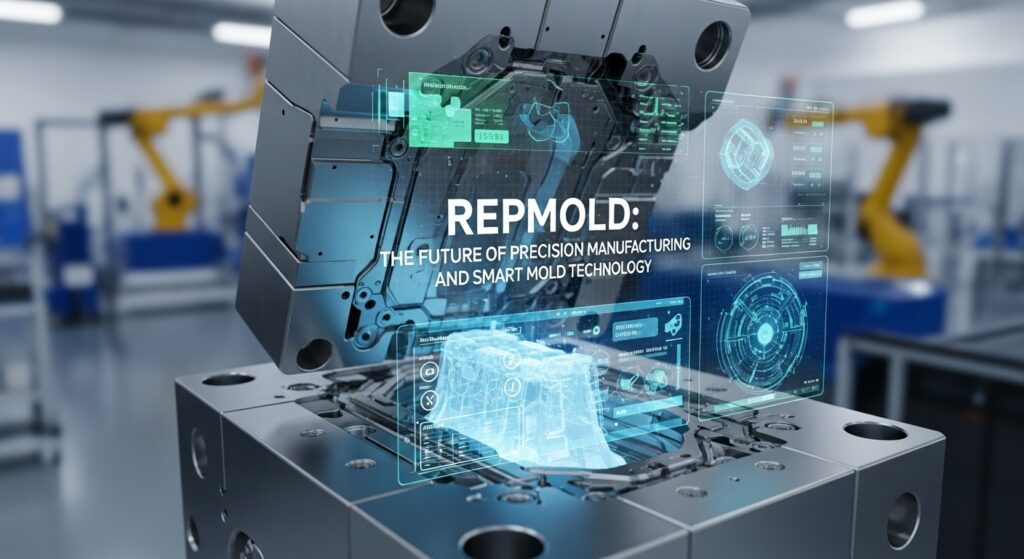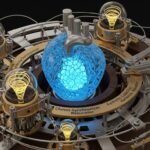In the modern world of manufacturing, Repmold stands as a revolutionary concept that’s transforming the way industries produce complex components with accuracy and efficiency. From automotive and aerospace to electronics and healthcare, the influence of Repmold technology is expanding rapidly. The term itself refers to advanced mold replication systems designed to produce identical high-quality parts with reduced material waste and improved production speed.
The emergence of Repmold technology marks a new chapter in precision manufacturing, combining innovation, digital integration, and sustainability in one powerful package.
Understanding Repmold and Its Importance
The word Repmold comes from “Replication Mold,” which focuses on creating accurate duplicates of molds and patterns used in mass production. Traditional mold-making involves several manual processes, but Repmold systems automate and refine them using digital modeling, computer-aided design (CAD), and robotic machining.
The main goal of Repmold is to ensure high accuracy, durability, and consistency in production — qualities that are essential in sectors such as automotive, medical devices, and consumer goods.
| Aspect | Traditional Molding | Repmold Technology |
|---|---|---|
| Accuracy | Moderate | High precision with digital tools |
| Time Efficiency | Longer cycle time | Reduced cycle time |
| Sustainability | Material waste present | Low material waste |
| Production Flexibility | Limited customization | High customization |
| Cost Efficiency | Higher over time | Cost-effective for scaling |
As seen in the table above, Repmold surpasses traditional molding techniques in almost every major aspect.
How Repmold Works
At its core, Repmold technology integrates modern design software and intelligent machines to produce molds with micro-level precision. The process typically involves:
-
Digital Design Creation – Engineers design a 3D model using CAD software, defining exact specifications.
-
Simulation Testing – Before manufacturing, simulations predict mold performance and identify flaws.
-
Precision Machining – CNC machines and automated milling systems carve out molds based on the digital model.
-
Replication Process – Once a master mold is created, it’s replicated through automated molding systems with consistent accuracy.
-
Quality Validation – Every mold undergoes inspection to ensure it meets dimensional and quality standards.
This combination of automation, robotics, and AI-driven analytics ensures that Repmold production remains efficient, precise, and cost-effective.
Applications of Repmold in Modern Industries
Repmold in Automotive Manufacturing
The automotive industry is one of the biggest beneficiaries of Repmold technology. Vehicle manufacturers rely heavily on accurate molds for producing engine components, body panels, and interiors. With Repmold, manufacturers can replicate molds quickly, reducing lead times and ensuring every car part is consistent in quality.
Repmold in Electronics and Consumer Goods
Electronics companies use Repmold systems to produce precise casings and micro-components for gadgets. This results in better product uniformity, higher durability, and reduced defects. In consumer goods, the technology allows for creative and ergonomic designs without compromising strength or texture.
Repmold in Medical Equipment
In healthcare, supports the production of surgical instruments, implants, and prosthetics that require exact dimensions. Since accuracy is critical in medical devices, offers a perfect solution through its high-precision capabilities.
| Industry | Use of Repmold | Benefit |
|---|---|---|
| Automotive | Engine parts, panels, and housings | High consistency and speed |
| Electronics | Device casings, connectors, and circuits | Miniaturization and precision |
| Medical Devices | Implants, surgical tools, and prosthetics | Biocompatibility and accuracy |
| Packaging | Molded packaging and containers | Sustainability and customization |
Advantages of Repmold Technology
1. Precision and Consistency
Repmold ensures each replicated mold maintains the exact structural integrity of the master mold. This precision eliminates variations that can occur in manual mold production.
2. Reduced Production Costs
By minimizing waste materials and optimizing manufacturing time, significantly reduces operational costs. Over time, businesses achieve better return on investment (ROI).
3. Sustainable Manufacturing
Sustainability is a major advantage of. The technology’s optimized resource usage, reduced emissions, and recyclable materials contribute to eco-friendly production.
4. Flexibility and Customization
Unlike traditional methods, allows manufacturers to modify designs rapidly. This flexibility is crucial for industries where customization and innovation drive competitiveness.
5. Enhanced Durability
Molds created through are highly durable, ensuring they can be reused multiple times without losing their shape or precision.
Challenges Faced by Repmold Technology
While offers numerous benefits, it’s not without challenges. High initial setup costs, complex software integration, and skilled labor requirements are common hurdles. Additionally, small manufacturers may find the adoption process costly initially, though long-term benefits often outweigh these challenges.
| Challenge | Description | Potential Solution |
|---|---|---|
| High Setup Cost | Expensive machinery and software | Government incentives and subsidies |
| Skilled Workforce Needed | Requires trained technicians and designers | Training programs and partnerships |
| Integration Complexity | Compatibility with existing systems | Modular software and flexible interfaces |
Repmold and the Role of Smart Manufacturing
The rise of Industry 4.0 has made an integral part of smart manufacturing. By connecting systems with IoT (Internet of Things) and AI analytics, factories can monitor mold wear, predict maintenance needs, and improve production efficiency in real-time.
Imagine a production line where every mold “communicates” its condition to a central dashboard, ensuring zero downtime. This level of connectivity enhances output and reliability while reducing errors caused by manual oversight.
Future Trends of Repmold Technology
As technology evolves, Repld is set to become even more advanced through integration with 3D printing, nanotechnology, and digital twins. These trends will redefine mold manufacturing by making it faster, cheaper, and more intelligent.
-
3D Printed Molds – Allowing faster prototyping and lower tooling costs.
-
AI-Driven Quality Control – Using artificial intelligence to detect errors in real time.
-
Digital Twin Systems – Creating virtual replicas of molds for performance simulation.
-
Sustainable Materials – Using biodegradable or recyclable materials for eco-friendly mold production.
These innovations will push to the forefront of global manufacturing in the coming decade.
Conclusion
In an era where precision, efficiency, and sustainability matter more than ever, stands as a transformative force. Its ability to combine advanced automation with digital intelligence makes it a cornerstone of modern production.
From cutting manufacturing costs to reducing environmental impact, offers a path toward smarter, cleaner, and more reliable manufacturing systems. As industries continue to innovate, the adoption of will not just be an option — it will be a necessity for staying competitive in the global market.






